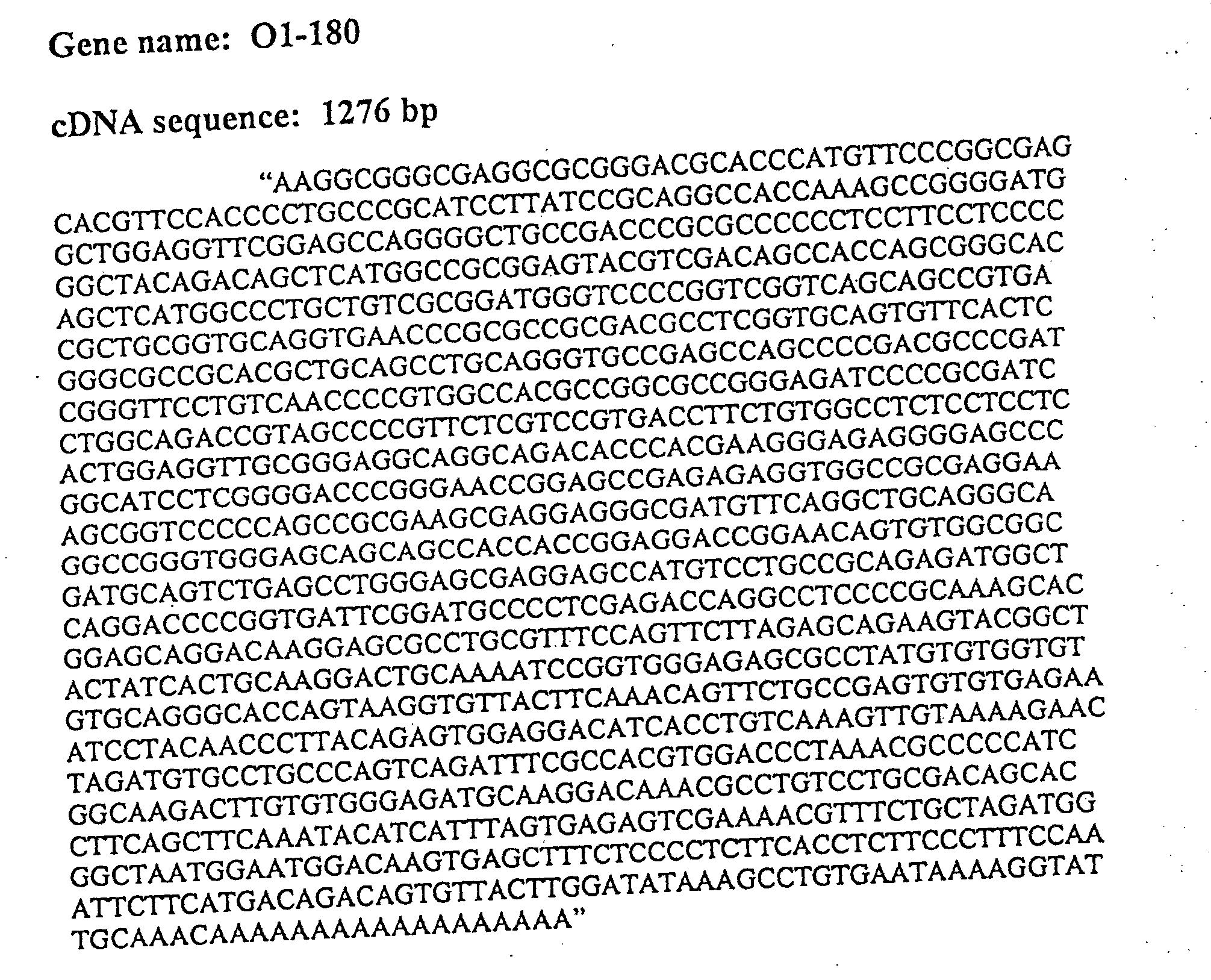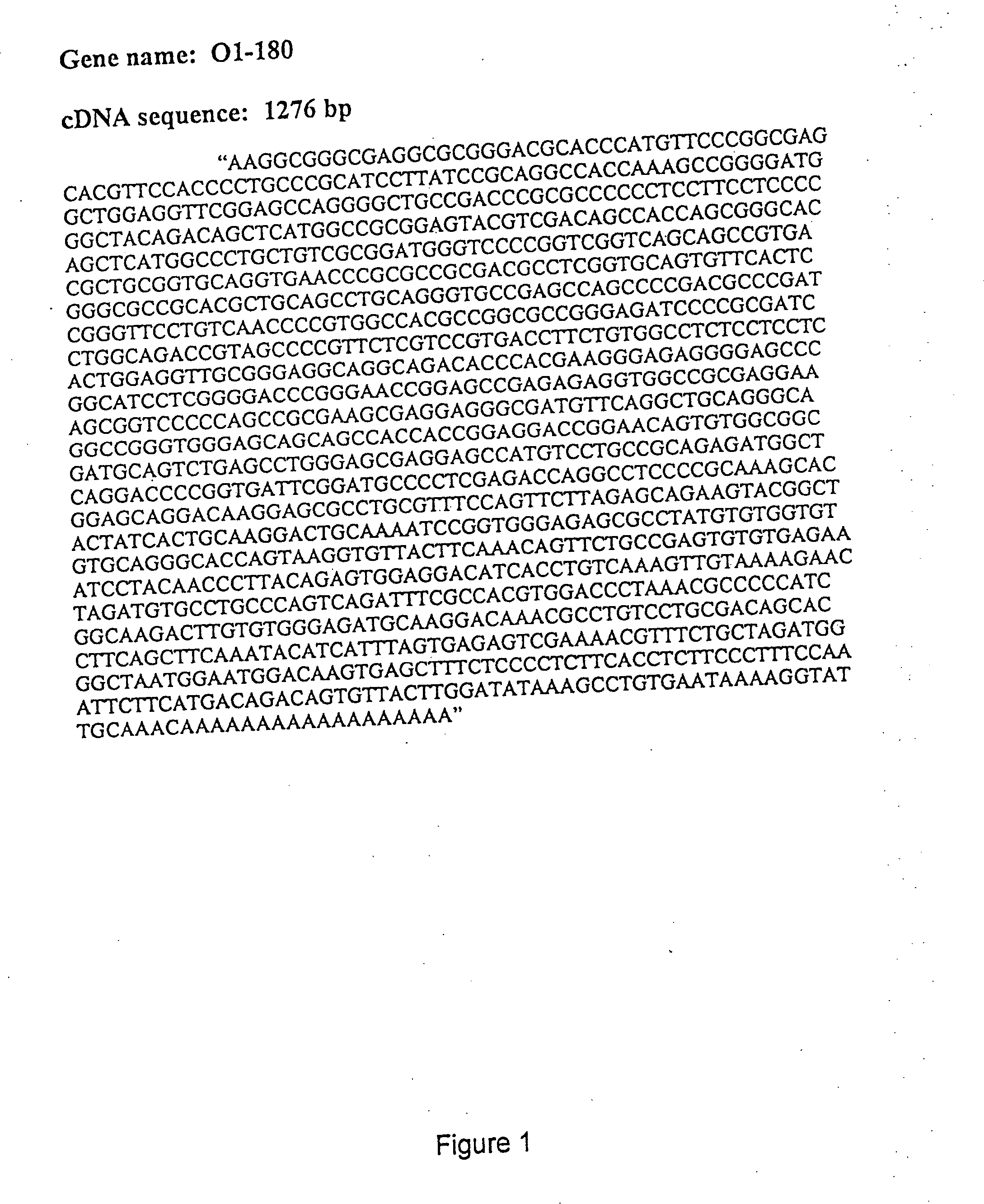Ovary-specific genes and proteins
- Summary
- Abstract
- Description
- Claims
- Application Information
AI Technical Summary
Benefits of technology
Problems solved by technology
Method used
Image
Examples
example 1
Creation of a cDNA Subtractive Hybridization Library
[0075] Ovaries from GDF-9-deficient mice are histologically very different from wild-type ovaries due to the early block in folliculogenesis. In particular, one layer primary follicles are relatively enriched in GDF-9-deficient ovaries and abnormal follicular nests are formed after oocyte loss. We took advantage of these differences in ovary composition and related them to alterations in gene expression patterns to clone novel ovary-expressed transcripts which are upregulated in the GDF-9-deficient ovaries.
[0076] Ovaries from either GDF-9-deficient mice (C57BL / 6 / 129SvEv hybrid) or wild-type mice were collected and polyA+ mRNA was made from each pool. Using a modified version of the CLONTECH PCR-Select Subtraction kit, we generated a pBluescript SK+ plasmid-based cDNA library which was expected to be enriched for sequences upregulated in the GDF-9-deficient ovaries. Ligations into the NotI site of pBluescript SK+ were performed wi...
example 2
Initial Sequence Analysis of Povaryl (pO1) Library Inserts
[0077] We performed sequence analysis of 331 inserts from the pO1 subtractive hybridization of cDNA library. An Applied Biosystems 373 DNA Sequencer was used to sequence these clones. BLAST searches were performed using the National Center for Biotechnology Information databases. Novel sequences were analyzed for open reading frames and compared to previously identified novel sequences using DNASTAR analysis programs. A summary of the data is presented in Table 1. As shown, the majority of the clones were known genes or match mouse or human ESTs. 9.4% of the clones fail to match any known sequence in the database.
example 3
Expression Analysis and cDNA Screening of Ovarian-Expressed Genes with No Known Function
[0078] The functions of the pO1-library gene products which match ESTs or where there is no match are not known (Table 1). Northern blot analysis was performed on all cDNAs which failed to match sequences in any database. Additionally, sequences matching ESTs derived predominantly from mouse 2-cell embryo cDNA libraries (e.g., O1-91, O1-184, and O1-236) were analyzed. The rationale for analyzing this last group of ESTs is that mRNAs expressed at high levels in oocytes may persist until the 2-cell stage and may play a role in early embryonic development including fertilization of the egg or fusion of the male and female pronuclei.
[0079] The results of the initial screen of novel ovarian genes is presented in Table 2. Northern blot analysis of 23 clones demonstrated that 8 of these clones were upregulated in the GDF-9-deficient ovary indicating the subtractive hybridization protocol used was adeq...
PUM
| Property | Measurement | Unit |
|---|---|---|
| Fraction | aaaaa | aaaaa |
| Fraction | aaaaa | aaaaa |
| Fraction | aaaaa | aaaaa |
Abstract
Description
Claims
Application Information
 Login to View More
Login to View More - Generate Ideas
- Intellectual Property
- Life Sciences
- Materials
- Tech Scout
- Unparalleled Data Quality
- Higher Quality Content
- 60% Fewer Hallucinations
Browse by: Latest US Patents, China's latest patents, Technical Efficacy Thesaurus, Application Domain, Technology Topic, Popular Technical Reports.
© 2025 PatSnap. All rights reserved.Legal|Privacy policy|Modern Slavery Act Transparency Statement|Sitemap|About US| Contact US: help@patsnap.com



